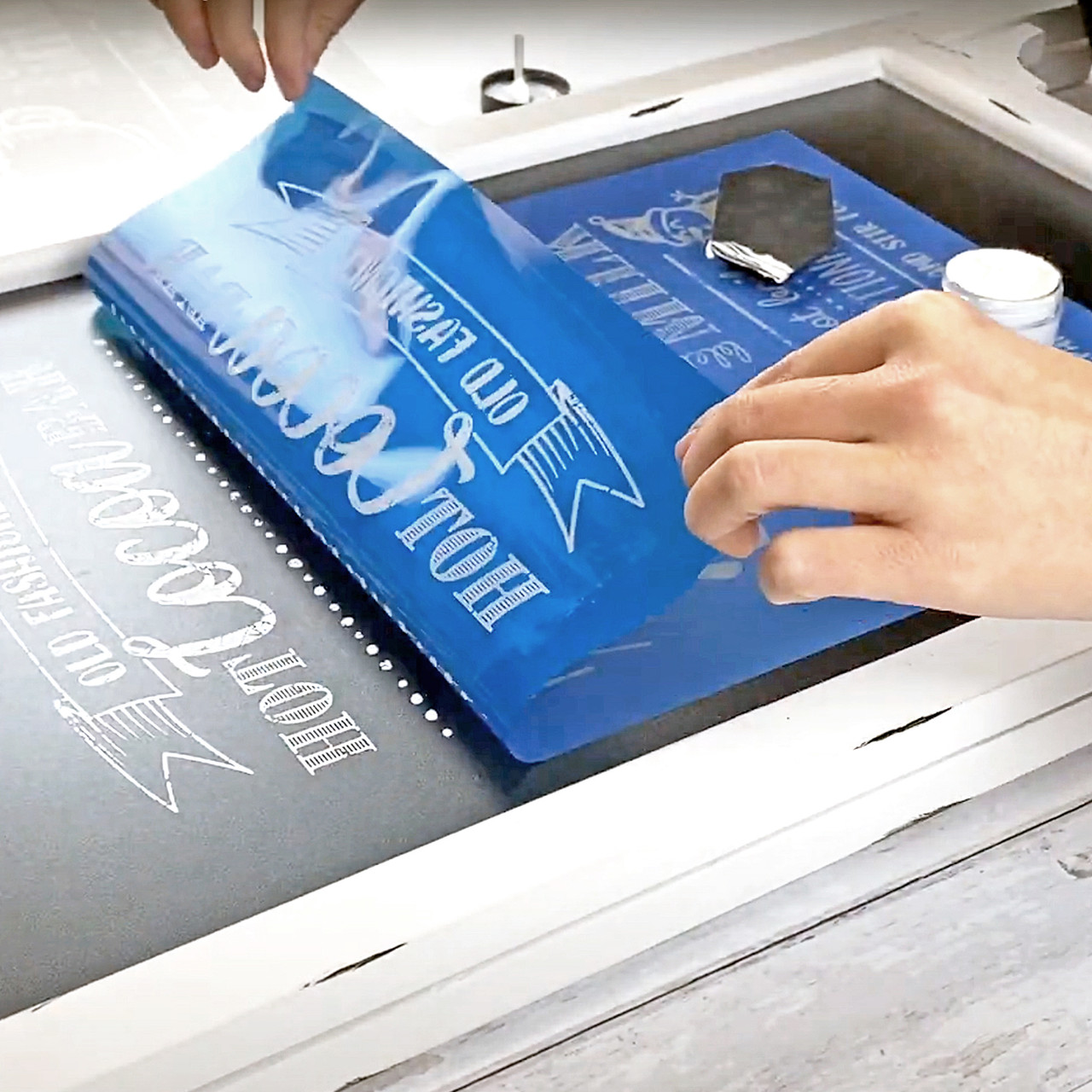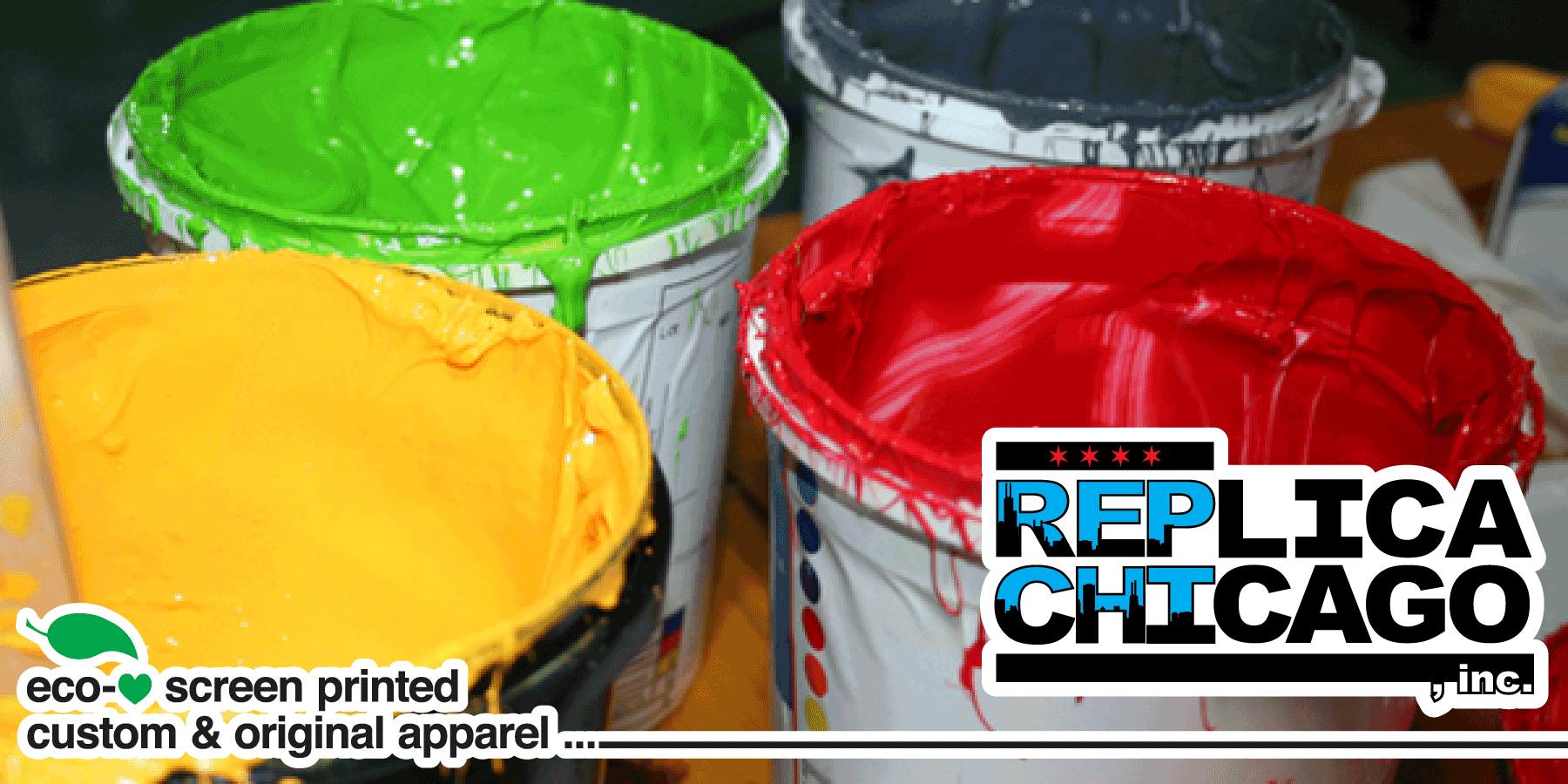Artistic Silk Screen Printing for Limited Edition Prints
Artistic Silk Screen Printing for Limited Edition Prints
Blog Article
Display Printing Uncovered: Whatever You Required to Learn About T-Shirt and Garment Printing Strategies
Display printing is an interesting technique that incorporates art with technique, supplying unlimited opportunities for creativity. Prepared to discover the necessary elements that make screen publishing an art form?
The Fundamentals of Display Printing: Just How It Works
When you dive right into display printing, you'll uncover it's both a scientific research and an art. At its core, display printing entails developing a stencil, or screen, that enables ink to pass via just in certain locations.
Following, you'll mix your inks and prepare your printing surface. Placement the screen over the fabric, then make use of a squeegee to push ink through the display onto the garment. This process calls for accuracy, as you want clear, vivid prints. After printing, you'll cure the ink with warmth, ensuring it follows the textile and lasts via washes. Each step is important, and understanding them will raise your display printing skills, changing straightforward garments right into one-of-a-kind, expressive pieces.
Types of Screen Printing Strategies
Once you grasp the essentials of screen printing, it's time to explore the various methods that can boost your designs. One prominent technique is typical display printing, where ink is pushed with a stenciled display.
If you're going for fine details, think about discharge printing. This technique removes color from the textile, leaving a soft, vintage look. One more choice is plastisol printing, recognized for its sturdiness and vibrant colors, making it a favorite for numerous brands. Experiment with halftone printing to create slope impacts and detailed layouts. Each method has its unique beauty, so don't hesitate to attempt them out to locate what suits your design best!
Crucial Equipment for Display Printing
To accomplish spectacular results in display printing, having the ideal tools is basic. Initially, you'll need a sturdy screen printing frame, which holds the mesh that moves your style onto the garment. Next off, buy high-grade squeegees; these are vital for using ink evenly throughout the display. You'll likewise need a good direct exposure system to produce your displays, along with a washout booth for cleansing them after usage. A reliable heat source, like a conveyor dryer or heat press, is crucial for treating your prints to ensure durability. Don't forget an appropriate office, equipped with tables and storage space for your supplies. Lastly, safety equipment, such as masks and gloves, will certainly maintain you safe from chemicals and inks. With the right tools, you'll be well on your method to producing professional-quality prints.
Choosing the Right Inks and Products
When picking inks and materials for display printing, you require to take into consideration the sort of ink that functions finest for your project. Believe regarding material compatibility to guarantee your layouts look terrific and last long. Check out green ink choices to make your printing process much more lasting.
Types of Screen Inks
Picking the appropriate screen ink is important for achieving dynamic, sturdy prints that satisfy your job's requirements. There are a number of types of screen inks to examine. Specialty inks, such as metallic or glow-in-the-dark, can include distinct results to your layouts.

Textile Compatibility Factors To Consider
Understanding textile compatibility is essential for achieving premium screen prints, particularly since different materials react distinctly to different inks. When picking inks, think about the material kind-- cotton, polyester, or blends. For cotton, water-based inks function well, supplying gentleness and breathability. Polyester, on the various other hand, commonly calls for plastisol inks for much better adhesion and vibrant shades. If you're printing on blends, you could need to utilize a combination of both types. Always check your inks on sample fabric to assure they stick properly and preserve color honesty. In addition, maintain in mind that textile weight and appearance can influence the last result, so selecting the best ink and material combo is important for your project's success.
Eco-Friendly Ink Options
Environmentally friendly inks are ending up being a prominent selection for display printers that desire to decrease their ecological influence while keeping high quality. When choosing inks, take into consideration water-based inks, which are much less harmful and much easier to cleanse up contrasted to traditional solvents.
Additionally, search for inks made from eco-friendly resources, such as soy or vegetable-based alternatives. By choosing the ideal inks and materials, you'll not just create stunning designs but likewise add to an extra lasting printing procedure. Make the switch, and your prints will certainly show your dedication to the environment!
Preparing Your Style for Display Printing

File Format Needs
To guarantee your layout looks sharp and dynamic on textile, you'll require to pay close attention to submit layout needs for screen printing. Make certain your layout has a clear background to prevent unwanted white sides on your prints. Maintain color settings in mind; CMYK is common for screen printing, so convert your RGB develops as necessary.
Color Separation Methods
Shade separation is a necessary action in preparing your design for display printing, and grasping it can considerably enhance your print top quality. You'll require to damage your style right into specific colors, as each color needs a different display during printing. This precision not just ensures precise shade representation but also enhances the printing process.
Resolution and Size
Attaining the most effective results in display printing begins with ensuring your style has the right resolution and dimension. Ideally, your art work ought to be at the very least 300 DPI (dots per inch) for sharp, clear prints. If you make use of reduced resolution, your last product might look pixelated and amateur.
When it concerns dimension, take into consideration the measurements of your print location. Design your art work to match the final print size, ideally producing it in the real measurements you'll be printing. By doing this, you'll stay clear of any kind of unexpected scaling problems.
Constantly check your layout in both vector and raster styles. Vector graphics can be scaled without shedding top quality, making them optimal for screen printing. Preparing appropriately will assure your style looks amazing on every garment!
Step-by-Step Screen Printing Refine
Display printing is a vibrant process that allows you to develop dynamic layouts on various surface areas. To get started, you'll need a screen, solution, and your selected ink.
Put ink onto the display and utilize a squeegee to press the ink via the pattern onto the textile. Lift the screen meticulously and allow the print dry. You have actually successfully display published your style.
Tips for Effective Screen Printing Projects
While you're diving right into your screen printing tasks, keep in mind that prep work is crucial to success. Start by collecting all your materials-- inks, screens, garments, and mops. A tidy workspace aids avoid undesirable errors, so clean up before you begin.
Following, confirm your art work is high-resolution and effectively sized for your garment. Check your display for appropriate direct exposure and clean it thoroughly to stay clear of smudges. When mixing your inks, adhere to the producer's standards to accomplish the ideal uniformity.
Throughout printing, apply even stress with your squeegee for regular results. Do not rush; take your time to validate each print fulfills your standards. After printing, allow your garments dry totally prior to taking care of or packaging them.
Last but not least, always maintain a sample of your work for future referral. By doing this, you can analyze your development and boost custom screen printing your methods with time. Pleased printing!

Often Asked Inquiries
For how long Does It Require To Establish up a Display Printing Work?
Establishing a screen printing job commonly takes around thirty minutes to an hour. You'll prepare the screens, mix inks, and adjust journalism. The moment varies based on complexity and experience, so stay arranged!
Can I Publish on Various Textile Types Using the Same Method?
Yes, you can print on various material types using the very same strategy, yet you'll need to adjust your inks and setups. Some materials absorb ink in a different way, so trying out guarantees the most effective outcomes for every product.
What Prevail Mistakes to Prevent in Display Printing?
When display printing, avoid common mistakes like using the incorrect ink, overlooking correct direct exposure times, or skipping pre-press checks. Always evaluate your configuration and preserve clean displays to assure top quality outcomes each time.
Exactly How Can I Effectively Clean and Maintain My Screen Printing Equipment?
To appropriately tidy and preserve your screen printing devices, you need to on a regular basis wash displays with appropriate solvents, check squeegees for wear, and assure all tools are stored dust-free and completely dry. Consistency protects against expensive repair work and improves performance.
Is Screen Printing Eco-friendly Compared to Various Other Approaches?
Screen printing can be much more ecologically pleasant than other techniques, specifically if you use water-based inks and eco-conscious products. By selecting sustainable supplies and practices, you reduce waste and reduce your effect on the world.
Display Printing Uncovered: Every Little Thing You Required to Know Regarding Tee and Garment Printing Techniques
At its core, screen printing includes developing a pattern, or display, that allows ink to pass with only in certain locations. Position the display over the textile, then utilize a squeegee to press ink via the screen onto the garment. One popular method is typical screen printing, where ink is pushed with a stenciled screen.When selecting inks and products for screen printing, you require to take into account the type of ink that works finest for your task.
Report this page